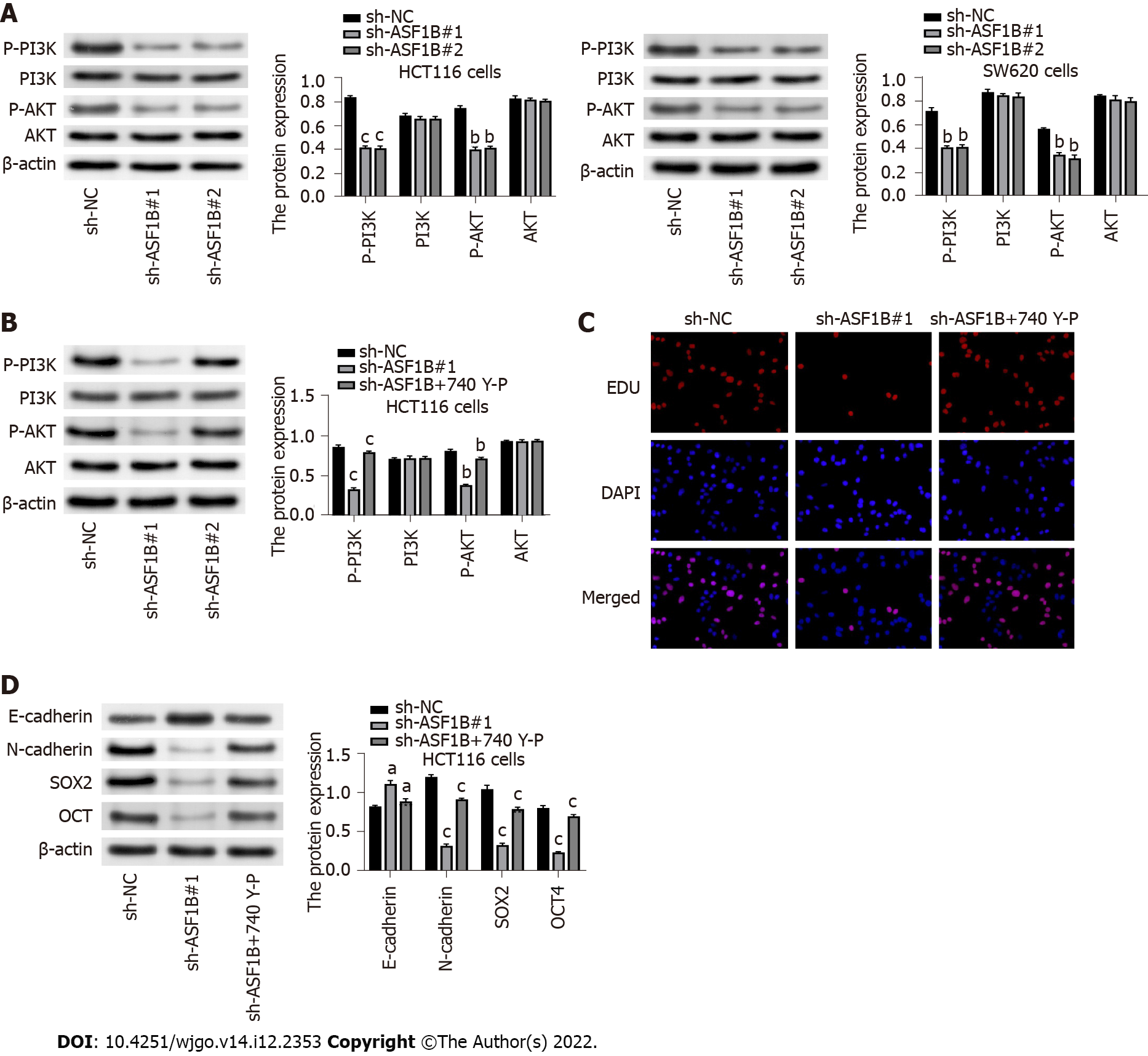Copyright
©The Author(s) 2022.
World J Gastrointest Oncol. Dec 15, 2022; 14(12): 2353-2366
Published online Dec 15, 2022. doi: 10.4251/wjgo.v14.i12.2353
Published online Dec 15, 2022. doi: 10.4251/wjgo.v14.i12.2353
Figure 4 Phosphatidylinositol 3-kinase activator reverses the inhibitory impact of anti-silencing function 1B down-regulation on proliferation, stemness and epithelial mesenchymal transition of colorectal cancer cells.
A: Protein levels of p-phosphatidylinositol 3-kinase (PI3K), PI3K, p-AKT and AKT were detected by western blot in HCT116 and SW620 cells after transfection of sh-anti-silencing function 1B (ASF1B)#1 or sh-ASF1B#2; B: Protein levels of p-PI3K, PI3K, p-AKT and AKT were detected by western blot in HCT116 cells. Short hairpin RNA against ASF1B (sh-ASF1B#1) vs sh-negative control (NC), sh-ASF1B+740 Y-P vs sh-ASF1B#1; C: The proliferation of HCT116 cells was evaluated by the 5-Ethynyl-2’-Deoxyuridine assay; D: Protein levels of E-cadherin, N-cadherin, SOX2 and OCT4 were detected by western blot in HCT116 cells. sh-ASF1B#1 vs sh-NC, sh-ASF1B + 740 Y-P vs sh-ASF1B#1. aP < 0.05, bP < 0.01, cP < 0.001. Each experiment was repeated three times. ASF1B: Anti-silencing function 1B; NC: Negative control.
- Citation: Yu GH, Gong XF, Peng YY, Qian J. Anti-silencing function 1B knockdown suppresses the malignant phenotype of colorectal cancer by inactivating the phosphatidylinositol 3-kinase/AKT pathway. World J Gastrointest Oncol 2022; 14(12): 2353-2366
- URL: https://www.wjgnet.com/1948-5204/full/v14/i12/2353.htm
- DOI: https://dx.doi.org/10.4251/wjgo.v14.i12.2353









